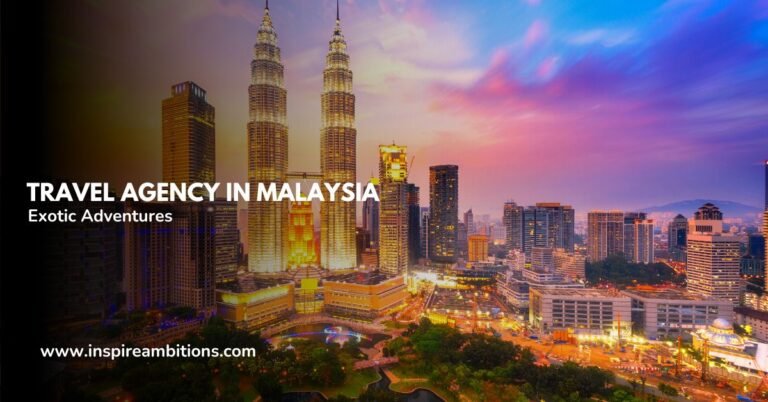迪拜和阿布扎比 – 探索主要景点和体验
Dubai and Abu Dhabi, two of the most renowned cities in the United Arab Emirates, offer distinctive experiences for travellers worldwide.
While Dubai is known for its modern architecture, luxurious shopping malls, and bustling nightlife, Abu Dhabi is the country’s capital. He boasts a rich cultural heritage, sophisticated architecture, and numerous world-class museums.
Despite being located just 140km apart, Dubai and Abu Dhabi provide diverse attractions and experiences for visitors to explore. Dubai’s impressive skyline, featuring the iconic Burj Khalifa and Burj Al Arab, exudes a futuristic appeal. At the same time, Abu Dhabi showcases the grandeur of the Sheikh Zayed Mosque and the artistic excellence of the Louvre Abu Dhabi.
Both cities have various accommodations, restaurants, and entertainment options to cater to different tastes and preferences.
Choosing between Dubai and Abu Dhabi depends on individual interests and expectations. Whether seeking an adrenaline-pumping adventure or a more laid-back cultural experience, travellers will undoubtedly find unique attractions and memorable experiences in each city.
Dubai and Abu Dhabi Overview
迪拜 and Abu Dhabi are the most prominent cities in the United Arab Emirates (UAE). Both are known for their futuristic architecture, luxurious lifestyles, and tourist attractions, but they also have distinct characteristics that set them apart.
Dubai, often called the UAE’s “sophisticated aunt,” is famous for its modern skyscrapers, including the iconic Burj Khalifa – the world’s tallest building. It is a premier shopping destination, housing numerous malls like the Dubai Mall.
The city is also known for its extravagance, with attractions like the indoor ski resort Ski Dubai, the artificial 朱美拉棕榈岛 Islands, and the magnificent Dubai Fountain.
In contrast, Dubai’s old and historic areas offer visitors a glimpse into the city’s vibrant culture with attractions like the traditional souks, Al Fahidi Historical Neighbourhood, and Dubai Museum.
Abu Dhabi, often viewed as the UAE’s “stuffy uncle,” is the nation’s capital and home to the federal government. While it also houses modern buildings and attractions, the city boasts a more traditional and reserved atmosphere. The Sheikh Zayed Mosque is a stunning example of Islamic architecture and symbolises Abu Dhabi’s deep-rooted cultural heritage. The city is committed to the arts and education, as evidenced by the presence of art and cultural institutions such as the Louvre Abu Dhabi and NYU Abu Dhabi.
Although both cities are part of the UAE, they maintain a certain level of autonomy, with distinct ruling families and separate economic policies. Dubai is more focused on tourism and commerce, while Abu Dhabi, the centre of the UAE’s oil industry, relies on energy exports for its significant income.
History of Dubai and Abu Dhabi
In the early 19th century, the Al Abu Falasa dynasty, part of the House of Al-Falasi, established Dubai as a dependent of Abu Dhabi. It remained in this arrangement until 1833. On the other hand, Abu Dhabi’s history takes us back to the Bronze Age.
这 杰贝尔·哈菲特 period, which extends from 3200 B.C. to 2500 B.C., plays a significant role in the region’s history due to the tombs found in Jebel Hafeet near Al Ain City in the emirate of Abu Dhabi. This was followed by the Umm Al Nar period, which extended from 2500 B.C. to 2000 B.C. [1]
Dubai and Abu Dhabi’s modern history can be traced back to a pivotal moment on February 18, 1968, when Sheikh Zayed, Ruler of Abu Dhabi, and Sheikh Rashid bin Saeed, Ruler of Dubai, reached a formal agreement to form a united entity. This led to the subsequent formation of the United Arab Emirates three years later, in 1971 [2].
Since the UAE’s formation, Dubai and Abu Dhabi have undergone incredible development and growth. Their economies have expanded rapidly, partly thanks to the discovery of significant oil reserves in the 20th century. Despite the oil wealth, the two emirates have diversified their economies, investing in various sectors, including tourism, finance, and real estate.
Today, the United Arab Emirates boasts a population of approximately 9.26 million, with its capital, Abu Dhabi, and its largest city, Dubai, continuing to be two of the most important hubs in the region. The UAE’s success is a testament to the vision and determination of these two emirates and their leaders, who have worked collaboratively to build a prosperous and vibrant nation.
经济发展
The UAE has made significant progress in its economic diversification efforts, with Abu Dhabi and Dubai leading roles in this transformation. The 阿布扎比 2030 年经济愿景 outlines the emirate’s plans for sustainable growth in non-oil sectors, targeting an annual growth rate of over 7.5%. Similarly, Dubai aims to enhance its industrial output and innovation through the Dubai Industrial Strategy 2030.
Abu Dhabi’s focus on critical sectors, such as renewable energy, has placed it at the forefront of the global green economy. The city is home to Masdar, a leader in clean technology and renewable energy, and the world’s largest single-site solar power plant. Furthermore, Abu Dhabi’s investments in infrastructure and transportation, including the Surface Transport Master Plan, have positioned the city for long-term economic growth.
On the other hand, Dubai has developed an advanced business ecosystem, becoming a global economic development model. The emirate’s innovative approach to business, coupled with its strategic location, has attracted numerous multinational companies and investors. Dubai’s ambitious Autonomous Transportation Strategy is an example of its efforts to modernise the city and enhance its competitiveness on the global stage.
Moreover, the UAE has established a strong presence in various sectors, including logistics, tourism, and finance. The country’s economic development policies encourage foreign investment and technological innovation, strengthening its position within the global economy. The UAE’s progressive approach in multiple areas demonstrates its commitment to advancing economic development and sustainability.
In summary, both Abu Dhabi and Dubai have made impressive strides in economic development, focusing on diversification and sustainable growth. Their efforts have solidified the UAE’s position as a leader in the global economy, exemplifying a modern, innovative, and forward-thinking nation.
Tourism in Dubai
让我们来探索一下。
Famous Landmarks
Dubai has many iconic landmarks that have earned its reputation as a world-class tourist destination. One of the most famous is the 哈利法塔, the tallest building in the world. A visit to its observation deck offers unparalleled views of the city.
Another striking structure is the Burj Al Arab, a luxurious hotel resembling a sail on its artificial island. The Palm Jumeirah, an artificial archipelago shaped like a palm tree, is another impressive engineering feat worth exploring.
Luxury Tourism
Dubai is synonymous with luxury tourism, opulent hotels, the finest dining experiences, and exclusive shopping centres. Visitors can indulge in world-class accommodation options such as the Atlantis, The Palm or the Jumeirah Beach Hotel. High-end shopping is available at locations such as The Dubai Mall, Mall of the Emirates, and the traditional Gold Souk.
For an extravagant dining experience, visit restaurants like At.mosphere and Hakkasan in Dubai. The city also boasts exceptional 夜生活 offerings, including rooftop bars, beach clubs, and exclusive VIP lounges.
文化之旅
While Dubai is known for its modernity and luxury, it also offers a glimpse into its rich cultural heritage. One popular option is to embark on a traditional Abra boat ride in Souk Madinat Jumeirah, which includes visiting historic sites, local markets, and mosques.
The Al Fahidi Historical Neighbourhood is another place to explore, showcasing the traditional architecture and lifestyle of the region. Furthermore, the Dubai Opera hosts diverse performances, from traditional Arabic music to ballet, allowing visitors to immerse themselves in the city’s flourishing arts scene.
Tourism in Abu Dhabi
让我们来看看吧。
文化景点
Abu Dhabi is home to numerous cultural attractions that showcase the rich history and heritage of the region. The 谢赫扎耶德大清真寺 is a must-visit site, representing a stunning example of Islamic architecture. Another must-see is the 阿布扎比卢浮宫, exhibiting an extensive collection of world-class artworks and artefacts.
Besides these major attractions, the city has various museums and galleries, such as the 马纳拉·萨迪亚特 Cultural Centre, which hosts exhibitions and events on art, design, and photography.
体育事件
Abu Dhabi is known for hosting high-profile sporting events, catering to fans of different sports. The 亚斯码头赛道 holds Formula 1 races, while 法拉利世界 offers thrilling rides for motorsport enthusiasts. Golf courses like the Yas Links and Saadiyat Beach Golf Club provide world-class facilities for golfers.
For water sports lovers, there are several options, including 亚斯水世界, which offers a variety of exhilarating aquatic activities, from water slides to wave pools.
Natural Tourism
Abu Dhabi’s geographical diversity presents ample opportunities for natural tourism. One of the most popular natural attractions is the 东部红树林, where tourists can enjoy kayaking trips witnessing the unique ecosystem and diverse wildlife.
这 利瓦绿洲 is another popular destination for natural tourism. This vast desert landscape offers visitors an authentic experience of traditional Bedouin culture and the opportunity for thrilling activities, such as dune bashing and camel riding.
Comparison Between Dubai and Abu Dhabi
Dubai and Abu Dhabi are two of the seven emirates in the United Arab Emirates (UAE), both offering unique experiences for travellers and residents alike. These two cities are known for their modern architecture, luxury lifestyle, and diverse cultures, but distinct differences set them apart.
Geographically, Dubai is situated further north on the southeast coast of the Persian Gulf, while Abu Dhabi lies to its south. As the most densely populated city in the UAE, Dubai is home to around 3.4 million people, whereas Abu Dhabi has a population of approximately 1.45 million.
In terms of activities, Dubai is renowned for its adventurous options, such as indoor skiing, water parks, and dune buggy racing in the desert, as mentioned by Abu Dhabi OFW. On the other hand, Abu Dhabi offers a more cultural experience with its museums, galleries, and the iconic Sheikh Zayed Grand Mosque. A key aspect that sets Abu Dhabi apart is its consistent ranking as one of the safest cities 在世界上。
The climate in both cities is quite similar, characterised by hot, sunny summers and mild, pleasant winters. However, Dubai tends to experience slightly hotter summers compared to Abu Dhabi. When it comes to prices, Abu Dhabi is generally considered to be more affordable than Dubai. Although both cities are known for their luxury offerings, Abu Dhabi has a broader range of budget-friendly hotel, restaurant, and entertainment options.
In summary, the choice between Dubai and Abu Dhabi depends on visitors’ preferences and what they hope to gain from their experience. Dubai offers thrilling activities and a fast-paced lifestyle, while Abu Dhabi provides a more relaxed atmosphere with richer cultural experiences. Both cities have a unique charm and are worth exploring for a well-rounded understanding of the UAE.
Challenges Facing Dubai and Abu Dhabi
Dubai and Abu Dhabi, emirates in the United Arab Emirates, have transformed into global trade, finance, and tourism hubs. However, both cities face several challenges that impact their long-term success and growth.
One pressing issue is the tense relationship between the two emirates. Differences in political and economic strategies have led to occasional friction, which could undermine cooperation and impede their combined efforts to tackle common challenges.
Another significant hurdle for Dubai, in particular, is its economic dependence on illicit financial flows. The city has attracted dubious characters and transactions as a trade and financial hub. Addressing this issue will be critical in enhancing Dubai’s long-term reputation and stability.
Both cities also face several ‘common business challenges‘. Setting up a company in the region requires navigating a complex web of regulations, licences, and local customs. This, in turn, can impede new businesses and stifle innovation.
Moreover, Dubai and Abu Dhabi are grappling with significant environmental challenges. Rapid urbanisation and industrial development have put immense pressure on natural resources and exacerbated the impacts of climate change. Responding to these concerns, the UAE government is actively pursuing policies to promote sustainable development and mitigate environmental degradation.
Finally, distributing the wealth from the region’s oil reserves in a manner that doesn’t distort the labour market is critical. Developing policies that distribute benefits without tying them to unproductive government jobs could help make the public sector more efficient and normalise private sector employment for the nationals.






